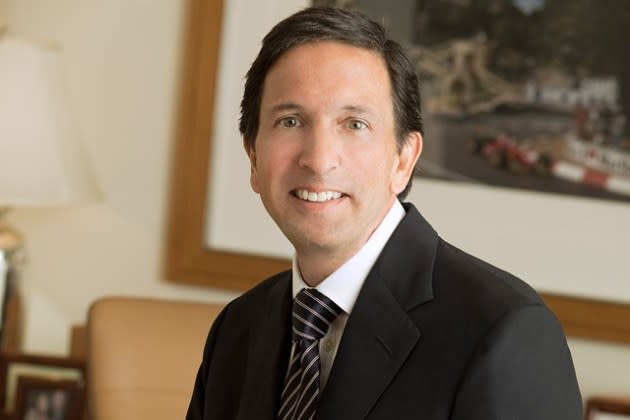Fashion CEOs Offer Scarier Take on the U.S. Consumer

Fashion’s chief executive officers are acknowledging a much more cautious consumer in the U.S.
While the headline economic readings might show an incredibly resilient shopper who is spending their way through inflation and higher interest rates, the on-the-ground take from retail CEOs this week showed something else.
More from WWD
For consumers, being willing to pony up for more expensive groceries is something different than refreshing the wardrobe.
And in a flurry of quarterly updates this week, some of fashion’s biggest players stood by their plans and expressed their own individual optimism, but also sketched a more-dire take on the consumer at large.
Hopes and challenges remain.
Unemployment is still ultra-low at 3.4 percent, but the Federal Reserve is seen as intent on changing that with higher interest rates.
Readings of consumer confidence show shoppers feel all right now, but expect tougher times ahead.
And comparisons start to get better as the year moves on, but beating last year’s lousy results is also a hollow kind of victory.
Here, how CEOs are describing the consumer landscape now in their quarterly conference calls with Wall Street.
John Idol, chairman and CEO, Carpi Holdings
“Asia has been going very, very well for the company…And then in [Europe, the Middle East and Africa], we’re very pleased with what we see happening there… When we look at the Americas, we definitely saw a sequential decline in North America. We saw it first in the North American department stores, and it wasn’t just the Michael Kors piece of the business. We saw it on the luxury side as well with Versace and Jimmy Choo…. What we’re feeling is that the consumer, who was feeling very good about their financial situation in calendar 2022, has been more conservative in the beginning of calendar ’23.”
Martin Waters, CEO, Victoria’s Secret & Co.
“I don’t think that we have a single silver-bullet answer for why the market [in North America] turned so dramatically between Q4 and Q1, but we see it in the numbers across the board with a high single-digit decrease in the market… And now the cycle has moved a little bit … there are other things to spend on, including beauty and outerwear and holidays and vacation and going out for food and beverage and all of those things. So there’s no single reason or a structural reason why the category overall is down, but we’re confident that it is. And we have to do as much as we can to get traffic into the stores with that difficult environment.”
Jeff Gennette, chairman and CEO, Macy’s Inc.
“Demand trends began to worsen in mid-March and further decelerated in April. We believe cooler temperatures and headlines surrounding layoffs and the banking crisis were factors, but so were the compounding effect of some previously identified macro headwinds. The U.S. consumer, particularly at Macy’s, pulled back more than we anticipated as they reallocated spend to food, essentials and services. We have planned our business for the remainder of the year, assuming mid-March through April macro headwinds continue and potentially worsen.”
Erik Nordstrom, CEO, Nordstrom Inc.
“As we’ve seen since June of last year, customer demand continued to be pressured given the current macroeconomic backdrop, which impacted our top-line results across both banners [Nordstrom and Nordstrom Rack]. By comparison, the first quarter of 2022 benefited from a strong pent-up demand for a return to occasions as the pandemic receded. As a result, our year-over-year sales comparisons for Q1 were difficult, but those comparisons get progressively easier as we proceed through the year.”
Stefan Larsson, CEO, PVH Corp.
“In a normal year, with all this traction [from the PVH+ strategic plan], we would have most likely flown this through because we keep gaining this traction all across the company. Having done this a few times, I know when that inflection point happens when you start to see traction just building. But at the same time, we are prudent. We are in it for the long-term value creation for shareholders, and we recognize we’re in a choppy macro. So that’s why we decided to — even though we beat [first-quarter earnings projections] — we recognize the choppy macro, and we decided to reaffirm the [annual] guidance.”
Best of WWD